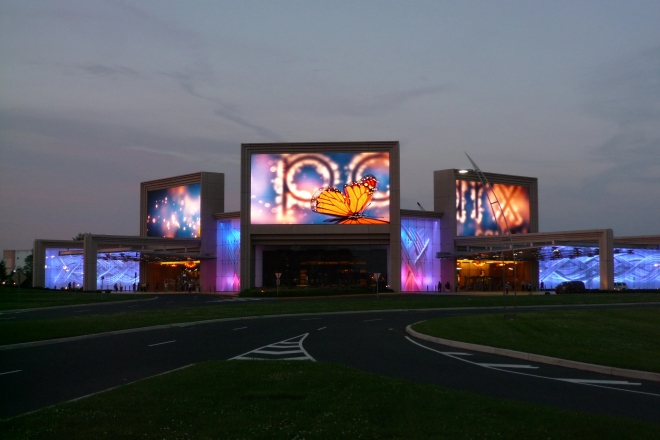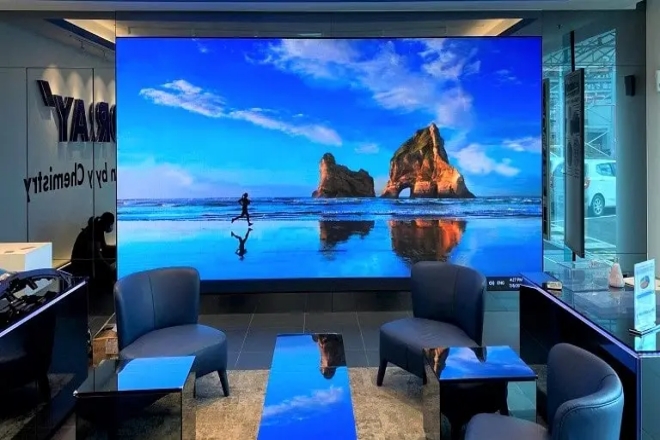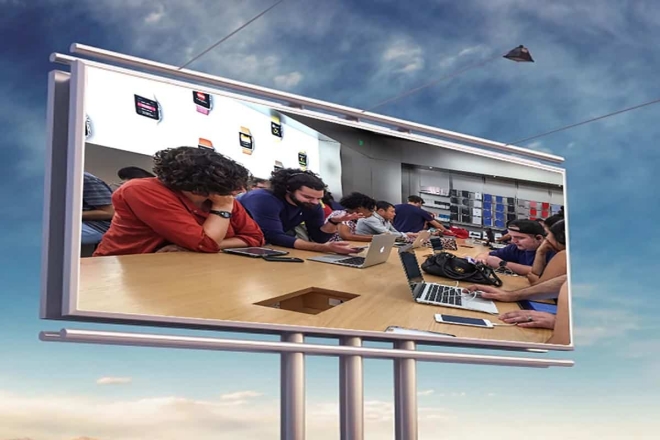Introducción

¿Alguna vez te has parado frente a una deslumbrante variedad de... pantallas de visualización LED¿Tiene dudas y no sabe qué tamaño elegir para que se adapte perfectamente a sus necesidades? ¿Le preocupa que el tamaño sea demasiado grande y provoque un desperdicio de recursos o demasiado pequeño y afecte la experiencia de visualización?
En la búsqueda actual de la eficiencia y la perfección, elegir el tamaño adecuado de pantalla LED es especialmente importante. Entonces, ¿cómo encontrar esa "proporción áurea" en poco tiempo para garantizar que su inversión sea económica y eficiente?
Este artículo te llevará directamente al meollo del asunto y te enseñará en tres minutos un conjunto de métodos para determinar rápidamente el tamaño de las pantallas LED. Te explicaremos uno por uno los escenarios de uso, los parámetros técnicos, los pasos de funcionamiento y las precauciones.
1. Aclarar los escenarios de uso y las necesidades de las pantallas LED.
Antes de elegir una pantalla LED, primero debemos tener claro dónde la vamos a utilizar y qué contenido va a mostrar. De esta manera, podremos elegir la pantalla más adecuada.
1) Entorno de uso:
Interior o exterior: imagina que si colocas una pantalla en un centro comercial, el ambiente es relativamente estable y la luz es fácil de controlar. Pero si se coloca en un cuadrado, debes tener en cuenta el viento y la lluvia y si el sol durante el día hará que la pantalla no se vea bien.
A qué distancia se encuentra el público de la pantalla: si la pantalla es grande, pero el público se encuentra lejos, es posible que no se vea con claridad. Por lo tanto, debemos saber a qué distancia se ubicará el público para poder ver la pantalla y así poder elegir el tamaño de pantalla adecuado.
Condiciones de iluminación: Si la pantalla se coloca en un lugar muy luminoso, como al aire libre o en una habitación muy luminosa, la pantalla debe ser más brillante para que el público pueda verla con claridad.
2) Requisitos de contenido:
Qué mostrar: ¿Quieres poner texto, imágenes, videos o transmisiones en vivo? Los diferentes contenidos tienen diferentes requisitos de pantalla. Por ejemplo, reproducir videos puede requerir un color de pantalla más brillante y una mayor resolución.
¿Los requisitos de calidad de imagen son altos? Si desea que el contenido en la pantalla se vea muy claro, como una película, debe elegir una pantalla de alta definición o incluso de ultraalta definición. Si se trata solo de texto o imágenes simples, los requisitos no son tan altos.
2. Comprenda los parámetros básicos de las pantallas LED.

Cuando empezamos a elegir pantallas LED, hay varios parámetros clave que no podemos pasar por alto. Son como el “carnet de identidad” de la pantalla, que nos indica el rendimiento y las características de esta.
1) Resolución y tamaño de píxel:el secreto de la claridad
La resolución, en términos simples, es la cantidad de píxeles en la pantalla. Determina la claridad de la imagen. El tamaño de los píxeles es la distancia entre dos píxeles adyacentes. Cuanto menor sea la distancia, más delicada se verá la imagen y más ricos serán los detalles.
Por lo tanto, a la hora de elegir, debemos elegir la resolución y el tamaño de píxeles adecuados según la distancia de visualización. Si la distancia es demasiado corta y la resolución no es lo suficientemente alta, puede producirse una “pixelación” y la imagen parecerá formada por pequeños cuadrados.
2). Brillo y contraste: la visualización del color y el nivel
El brillo, expresado en cd/m², determina la visibilidad de la pantalla bajo una luz intensa. Si la utilizas en exteriores, debes elegir una pantalla con un brillo alto para poder verla con claridad durante el día. El contraste afecta a la superposición de colores y al sentido tridimensional de la imagen. La pantalla con un alto contraste tiene una transición de color más natural y una imagen más profunda.
3) Tamaño y proporción: lo mejor es lo adecuado
El tamaño de la pantalla se expresa generalmente como “largo × ancho”. Al elegir, además de considerar el tamaño del espacio de instalación real, también debe elegir según el escenario de aplicación y el diseño del contenido.
Las relaciones de aspecto más comunes son 16:9 y 4:3, entre otras. Tienen sus propias características y son adecuadas para diferentes escenarios de uso. Por ejemplo, la relación de aspecto 16:9 es más adecuada para ver videos porque se acerca más a la relación de aspecto de las pantallas de cine, mientras que 4:3 es más adecuada para mostrar documentos o imágenes.
Al mismo tiempo, también debemos tener en cuenta la comodidad visual de la audiencia para evitar la fatiga visual causada por pantallas demasiado grandes o demasiado pequeñas.
3. Cálculo rápido y selección de pantallas LED
Ahora que ya tenemos suficiente conocimiento sobre las pantallas LED, es hora de elegir la más adecuada. No te preocupes, aquí te dejamos unos sencillos y prácticos pasos que te ayudarán a hacer una elección rápida y acertada.
1). Estimación basada en distancia de visualización
Imagina dónde se encuentra la audiencia para mirar tu pantalla. Puedes usar algunas fórmulas empíricas simples o herramientas en línea.
Solo tienes que introducir la distancia de visualización y el ángulo de visión que deseas (por ejemplo, si quieres que la audiencia pueda ver la pantalla con claridad desde cualquier ángulo), y la herramienta te ayudará a calcular automáticamente un rango de tamaño de pantalla adecuado. De esta forma, puedes seguir seleccionando dentro de este rango.
2) Análisis coste-efectividad
A la hora de comprar, por supuesto, hay que tener en cuenta la relación coste-beneficio. Al elegir una pantalla LED, no solo hay que fijarse en el tamaño de la pantalla, sino también en el impacto de factores como la resolución, el brillo y el color en el precio.
Puedes enumerar varias alternativas, comparar su rendimiento y precio, y elegir la que presente la mejor relación coste-beneficio.
Al mismo tiempo, también debe considerar posibles cambios en la demanda en el futuro, como por ejemplo si necesita reservar algún espacio de actualización para poder reemplazar componentes de mayor rendimiento en el futuro.
3) Medición y simulación in situ
Si las condiciones lo permiten, lo mejor es medir el tamaño y la forma del espacio de instalación en el lugar para saber con mayor precisión qué tamaños de pantalla son los adecuados. Además, existen muchos programas virtuales que pueden ayudarlo a simular los efectos de instalación de pantallas de diferentes tamaños.
Puede intentar utilizar este software para obtener una vista previa de los efectos reales de las pantallas de diferentes tamaños en sus escenarios de aplicación para que pueda sentir de manera más intuitiva qué tamaño es el más adecuado para sus necesidades.
4. Puntos a destacar

En el proceso de selección de pantallas LED, además de los puntos clave mencionados anteriormente, hay algunas cosas que vale la pena tener en cuenta. Estos pequeños detalles pueden afectar su experiencia de uso posterior y los costos de mantenimiento, por lo que no deben ignorarse.
1) Entorno de instalación
Capacidad de carga:
Antes de instalar la pantalla LED, asegúrese de que la capacidad de carga del lugar de instalación sea suficiente. Las pantallas grandes no suelen ser ligeras. Si el lugar de instalación no es lo suficientemente resistente, puede provocar riesgos de seguridad.
Ventilación y disipación de calor:
Las pantallas LED generan una cierta cantidad de calor durante su funcionamiento, por lo que las condiciones de ventilación y disipación del calor son muy importantes. Si el entorno de instalación es cerrado o está mal ventilado, la pantalla puede sobrecalentarse y afectar su vida útil.
Resistente al agua y al polvo:
En el caso de las pantallas LED para exteriores o entornos especiales, también son esenciales las capacidades de impermeabilidad y resistencia al polvo. La elección de productos con las calidades correspondientes puede garantizar que la pantalla pueda seguir funcionando de manera estable en condiciones climáticas adversas o entornos polvorientos.
2) Servicio posventa
El ciclo de mantenimiento y uso de las pantallas LED es largo, por lo que el servicio posventa es especialmente importante. Elegir un proveedor con un buen sistema de servicio posventa puede permitir obtener ayuda oportuna ante problemas, reducir los costos de mantenimiento y garantizar un uso sin preocupaciones.
Conclusión
Elegir el tamaño adecuado para una pantalla LED no es una tarea sencilla. Requiere que tengamos en cuenta de forma exhaustiva múltiples factores, como los escenarios de uso, los requisitos de contenido, los parámetros técnicos y la relación coste-beneficio.
A través de la introducción de este artículo, esperamos brindarles a los lectores una idea clara y métodos prácticos para ayudar a todos a elegir la pantalla LED que más les convenga.
Finalmente, si quieres saber más sobre las pantallas LED, Por favor póngase en contacto con nosotros.
